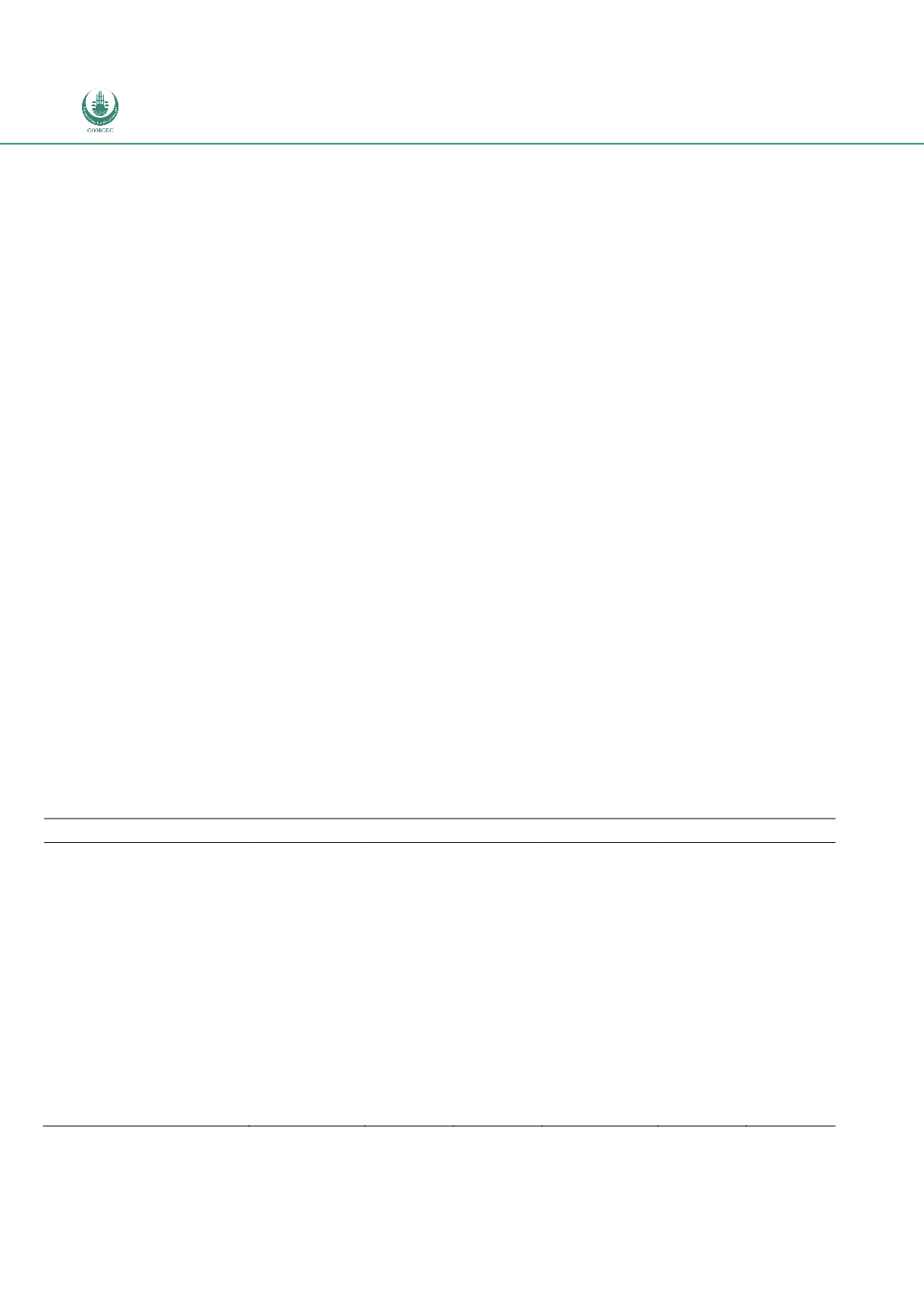

Preferential Trade Agreements and Trade Liberalization Efforts in the OIC Member States
With Special Emphasis on the TPS-OIC
162
On the export side, it can be seen that there might be some scope for increasing the share of the TPS
as a destination of exports for some of the members. This will depend on the liberalisation schedules
presented by each of the members and how they match the respective export structures. If products
of relevance for a particular TPS-OIC member are not included in the coverage list of the other
members, there will be no effect. In consequence, it is important to consider the lists of top products
in each member countries exports and imports to and from the TPS-OIC to capture the magnitude of
the potential effects. However, before presenting these results, we first explore further aspects of the
nature of TPS-OIC trade.
Consider Table 31. This gives the share of each of the Contracting Countries of TPS-OIC in their total
exports and imports to and from the world for 2007 (this is unfortunately the last year for which
information was available for all the TPS members). Hence Bangladesh accounted for 1.89% of these
countries exports, and 2.89% of their imports. TPS countries’ total exports were almost USD 700
billion. A third of the exports were explained by the exports of Saudi Arabia, a quarter by the exports
of Malaysia and if we take the GCC as a group, (Saudi Arabia, UAE, Qatar and Oman) it accounted for
around 54% of the exports of the TPS-OIC. In terms of imports, the top importers were Turkey and
Malaysia, accounting for 26.6% and 23.7% respectively.
The incidence of oil in these figures is clear. If oil (270900) is removed from the calculations, the
share of Saudi Arabia in the total exports of the TPS countries falls to 12% and the share of the GCC
countries falls to 26% in total exports. The share of the GCC members is further reduced if the
exports of gas are also removed. Although oil is traded within the TPS members as we will see, the
incidence of this product in the intra-TPS trade is substantially lower than in the extra-TPS trade.
This suggests that the results might be particularly sensitive to the inclusion or exclusion of this
product/sector and this needs to be borne in mind.
Table 31: Composition of TPS-OIC Trade with World by Member (2007)
Reporter
Exports
Export Share
Imports
Import Share
All
No oil
All
No oil
Bahrain
13,368,662
1.89%
3.14%
11,514,109
1.89%
0.97%
Bangladesh
13,139,292
1.86%
3.09%
17,294,361
2.83%
2.93%
Jordan
4,484,299
0.63%
1.05%
13,345,329
2.18%
1.94%
Malaysia
173,793,754 24.55%
38.56% 142,247,765
23.29%
23.51%
Oman
22,030,256
3.11%
1.78%
15,948,837
2.61%
2.74%
Pakistan
17,188,091
2.43%
4.04%
32,017,578
5.24%
4.87%
Qatar
41,222,247
5.82%
5.18%
23,417,665
3.83%
4.03%
Saudi Arabia
229,616,032
32.44%
11.66% 90,203,716
14.77% 15.51%
Turkey
106,121,535
14.99%
24.95% 159,137,849 26.05%
25.33%
United Arab Emirates
86,898,673
12.28%
6.54% 105,699,216
17.30%
18.17%
Total
707,862,841 100.00% 100.00% 610,826,423 100.00% 100.00%
Source: Comtrade via WITS

















